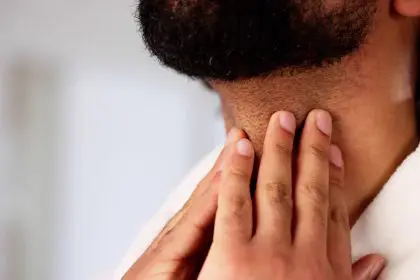That coarse, sometimes embarrassing hair growing in your nostrils might seem like nothing more than a grooming nuisance, but medical experts now recognize it plays a vital role in protecting not just your respiratory system but your heart health as well. This overlooked feature of human anatomy serves as a sophisticated first line of defense with far-reaching benefits for cardiovascular wellness.
The filtering system supporting your heart
The most visible function of nose hair involves trapping airborne particles before they enter your respiratory system. 1) These tiny filaments create a complex maze that captures dust, pollen, bacteria, and pollution particles that would otherwise make their way into your lungs and potentially your bloodstream.
This filtering process directly impacts cardiovascular health in several ways. When fewer contaminants reach your lungs, your body expends less energy clearing these particles, reducing stress on both your respiratory and circulatory systems. The heart, which must pump harder when the body faces respiratory challenges, benefits from this reduced workload.
For people living in urban environments or those with occupational exposure to airborne particles, this natural filtration becomes even more critical. Studies show that particulate matter exposure correlates with increased cardiovascular disease risk, making nose hair an unexpected ally in heart protection for those in high-pollution areas.
The immune response triggered by airborne irritants often involves inflammation throughout the body, not just in the respiratory tract. Since chronic inflammation represents a significant risk factor for heart disease, the reduction in inflammatory triggers provided by nasal filtration offers meaningful cardiovascular protection.
Moisture management for efficient oxygen transfer
Beyond filtering particles, nose hair plays a significant role in maintaining proper humidity levels in inhaled air. 2) These tiny strands help capture moisture from exhaled breath and from the mucous membranes lining the nasal passages, then transfer this humidity to incoming air before it reaches the lungs.
This humidification process proves essential for efficient oxygen transfer throughout the respiratory system. Properly moistened lung tissues absorb oxygen more effectively and transfer it to the bloodstream with less resistance. This optimization directly supports heart function, as the cardiovascular system works more efficiently when oxygen saturation remains optimal.
Dry air irritates respiratory tissues, potentially triggering protective responses like increased mucus production or airway constriction that make breathing less efficient. These respiratory adjustments force the heart to work harder to maintain proper oxygenation throughout the body, creating unnecessary cardiovascular strain that properly humidified air helps prevent.
The moisture-retention capabilities of nose hair become particularly valuable in dry environments, during winter months when indoor heating reduces humidity, or while exercising in cold weather when respiratory water loss increases. In these situations, the humidification function helps prevent respiratory irritation that could indirectly stress the cardiovascular system.
Temperature regulation protecting heart function
The nose serves as your body’s primary air conditioner, and nose hair plays a key supporting role in this temperature management system. 3) As air passes through the nasal passages, the combination of turbulent airflow created by nasal hair and the extensive blood vessel network in the nose either warms cold air or cools hot air before it reaches the lungs.
This temperature regulation provides significant cardiovascular benefits. When inhaled air arrives at your lungs already adjusted to near body temperature, your cardiovascular system avoids the stress of accommodating temperature extremes. Your heart doesn’t need to increase blood flow to warm extremely cold air or divert resources to cool overheated inhaled air.
Cold air inhalation presents particular cardiovascular challenges, as it can trigger protective but potentially stressful responses like bronchoconstriction and increased blood pressure. People with existing heart conditions often notice symptom aggravation in cold weather, partly due to these respiratory responses that nose hair helps moderate.
For exercise in cold environments, this temperature regulation function becomes even more valuable. The combination of increased respiratory rate and cold air exposure during winter exercise creates significant respiratory stress that can translate to cardiovascular strain. The warming function provided by nasal passages and nose hair helps mitigate these effects.
Infection prevention supporting heart wellness
Your nose forms a major entry point for pathogens, and nose hair provides a crucial defensive barrier against these invaders. 4) The combination of nasal hair filtration and the sticky mucus coating these hairs creates an effective trap for bacteria, viruses, and fungal spores before they can establish infections in the respiratory tract.
This infection prevention directly supports cardiovascular health in several ways. Respiratory infections increase inflammation throughout the body, not just in the respiratory tract, and this systemic inflammation can impact cardiovascular function. By reducing infection frequency, nose hair indirectly protects against this inflammatory burden.
More serious respiratory infections like pneumonia place significant strain on the cardiovascular system as the body fights the infection. The heart must work harder to support immune function, oxygen levels often decrease, and inflammation can affect heart rhythm and function. Preventing these infections provides meaningful cardiovascular protection.
Recent research has increasingly recognized the connection between respiratory infections and subsequent cardiovascular events. Studies show elevated heart attack and stroke risk in the weeks following respiratory illnesses. By serving as a first-line defense against these infections, nose hair contributes to long-term heart protection.
Nitric oxide regulation for blood vessel health
Perhaps the most surprising connection between nose hair and heart health involves nitric oxide, a molecule produced in the nasal passages that plays a crucial role in cardiovascular function. 5) Nitric oxide helps regulate blood pressure, improves blood vessel flexibility, and enhances circulation throughout the body.
Nose hair enhances nitric oxide benefits by creating turbulence in airflow through the nasal passages. This turbulence slows air movement, allowing more time for nitric oxide to be absorbed into the bloodstream where it can exert its cardiovascular benefits. Without adequate nose hair, air might move too quickly through the nasal passages for optimal nitric oxide absorption.
The cardiovascular benefits of proper nitric oxide levels include reduced blood pressure, improved exercise capacity, enhanced circulation, and even reduced clotting risk. These effects contribute to both immediate cardiovascular function and long-term heart health protection.
For those who exercise regularly, this nitric oxide regulation becomes particularly valuable. Proper levels enhance exercise performance through improved blood flow to working muscles and more efficient oxygen utilization. This creates a positive cycle where exercise itself stimulates more nitric oxide production, further enhancing cardiovascular benefits.
Proper nasal care for heart health
Maintaining healthy nasal passages maximizes these cardiovascular benefits while supporting overall respiratory function. Gentle nasal hygiene practices help preserve the protective functions of nose hair without damaging these important structures.
Staying adequately hydrated supports proper mucus production in nasal passages, enhancing the ability of nose hair to trap particles and maintain moisture levels. This simple practice becomes particularly important during dry weather, in air-conditioned environments, or while flying when dehydration commonly affects respiratory membranes.
Saline nasal sprays provide additional moisture when environmental conditions cause excessive dryness. These gentle solutions help maintain the proper environment for nose hair to function effectively without irritating sensitive nasal tissues. Unlike medicated nasal sprays that can cause rebound congestion, saline solutions can be used regularly without concern.
Avoiding unnecessary trimming preserves the protective functions of nose hair. While grooming visible nose hair for aesthetic reasons remains common practice, excessive trimming can reduce the filtering capabilities this hair provides. If trimming becomes necessary, focusing only on visible hairs while preserving the deeper nasal hair maintains most protective benefits.
Environmental awareness helps protect nasal function and respiratory health. Reducing exposure to smoke, strong chemical odors, and pollution when possible prevents irritation to nasal passages and preserves the proper function of nose hair. When exposure can’t be avoided, techniques like breathing through the nose rather than the mouth maximizes the filtering benefits this hair provides.
Special considerations for aging and cardiovascular risk
As we age, both nose hair patterns and cardiovascular risk factors change in ways that make understanding this connection increasingly important. Many people notice thicker, more visible nose hair with aging, a natural adaptation that may partly compensate for declining respiratory and immune function.
Those with existing cardiovascular conditions benefit particularly from maximizing nasal health. The reduced respiratory stress provided by proper nose hair function offers meaningful support for hearts already compromised by conditions like coronary artery disease, heart failure, or arrhythmias.
Seasonal awareness becomes important for those with heart conditions, as winter months bring both increased respiratory infection risk and cardiovascular challenges from cold air exposure. During these periods, paying particular attention to nasal health helps reduce additional stress on the cardiovascular system.
The connection between respiratory health and heart wellness extends far beyond nose hair, encompassing breathing patterns, sleep quality, exercise capacity, and inflammation levels. Viewing nose hair as one component of this broader relationship helps place its importance in proper context while recognizing the many factors contributing to cardiovascular health.
While nose hair might seem like an unlikely hero in cardiovascular protection, its multifaceted roles in filtering particles, managing moisture, regulating temperature, preventing infections, and optimizing nitric oxide levels create meaningful benefits for heart health. Understanding these connections highlights the sophisticated integration of body systems and the sometimes surprising ways our anatomy supports overall wellness.


















